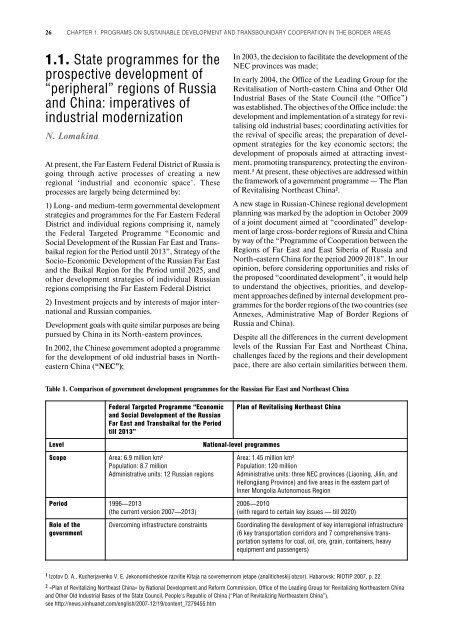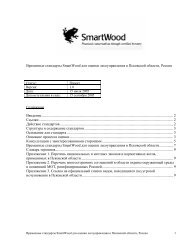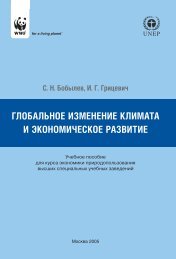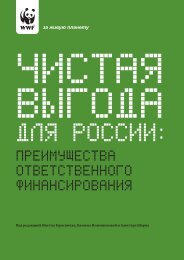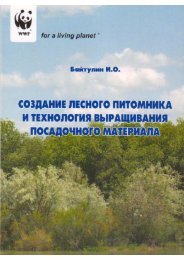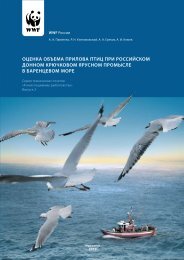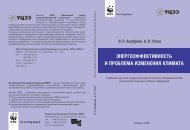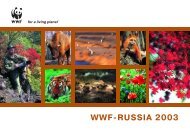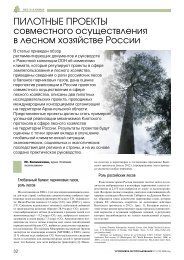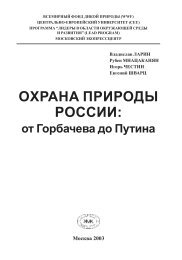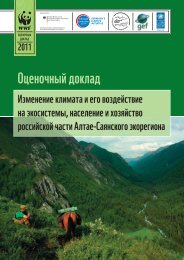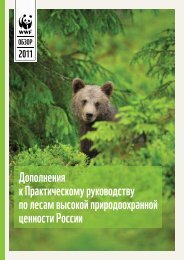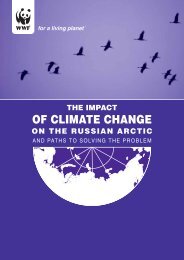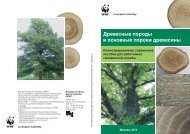to sino- russian
to sino- russian
to sino- russian
You also want an ePaper? Increase the reach of your titles
YUMPU automatically turns print PDFs into web optimized ePapers that Google loves.
26 CHAPTER 1. PROGRAMS ON SUSTAINABLE DEVELOPMENT AND TRANSBOUNDARY COOPERATION IN THE BORDER AREAS<br />
1.1. State programmes for the<br />
prospective development of<br />
“peripheral” regions of Russia<br />
and China: imperatives of<br />
industrial modernization<br />
N. Lomakina<br />
At present, the Far Eastern Federal District of Russia is<br />
going through active processes of creating a new<br />
regional ‘industrial and economic space’. These<br />
processes are largely being determined by:<br />
1) Long- and medium-term governmental development<br />
strategies and programmes for the Far Eastern Federal<br />
District and individual regions comprising it, namely<br />
the Federal Targeted Programme “Economic and<br />
Social Development of the Russian Far East and Transbaikal<br />
region for the Period until 2013”, Strategy of the<br />
Socio-Economic Development of the Russian Far East<br />
and the Baikal Region for the Period until 2025, and<br />
other development strategies of individual Russian<br />
regions comprising the Far Eastern Federal District<br />
2) Investment projects and by interests of major international<br />
and Russian companies.<br />
Development goals with quite similar purposes are being<br />
pursued by China in its North-eastern provinces.<br />
In 2002, the Chinese government adopted a programme<br />
for the development of old industrial bases in Northeastern<br />
China (“NEC”);<br />
Federal Targeted Programme “Economic<br />
and Social Development of the Russian<br />
Far East and Transbaikal for the Period<br />
till 2013”<br />
In 2003, the decision <strong>to</strong> facilitate the development of the<br />
NEC provinces was made;<br />
In early 2004, the Office of the Leading Group for the<br />
Revitalisation of North-eastern China and Other Old<br />
Industrial Bases of the State Council (the “Office”)<br />
was established. The objectives of the Office include: the<br />
development and implementation of a strategy for revitalising<br />
old industrial bases; coordinating activities for<br />
the revival of specific areas; the preparation of development<br />
strategies for the key economic sec<strong>to</strong>rs; the<br />
development of proposals aimed at attracting investment,<br />
promoting transparency, protecting the environment.<br />
1 At present, these objectives are addressed within<br />
the framework of a government programme — The Plan<br />
of Revitalising Northeast China2 .<br />
A new stage in Russian-Chinese regional development<br />
planning was marked by the adoption in Oc<strong>to</strong>ber 2009<br />
of a joint document aimed at “coordinated” development<br />
of large cross-border regions of Russia and China<br />
by way of the “Programme of Cooperation between the<br />
Regions of Far East and East Siberia of Russia and<br />
North-eastern China for the period 2009 2018”. In our<br />
opinion, before considering opportunities and risks of<br />
the proposed “coordinated development”, it would help<br />
<strong>to</strong> understand the objectives, priorities, and development<br />
approaches defined by internal development programmes<br />
for the border regions of the two countries (see<br />
Annexes, Administrative Map of Border Regions of<br />
Russia and China).<br />
Despite all the differences in the current development<br />
levels of the Russian Far East and Northeast China,<br />
challenges faced by the regions and their development<br />
pace, there are also certain similarities between them.<br />
Table 1. Comparison of government development programmes for the Russian Far East and Northeast China<br />
Level National-level programmes<br />
Scope Area: 6.9 million km 2<br />
Population: 8.7 million<br />
Administrative units: 12 Russian regions<br />
Period 1996—2013<br />
(the current version 2007—2013)<br />
Role of the<br />
government<br />
Plan of Revitalising Northeast China<br />
Area: 1.45 million km 2<br />
Population: 120 million<br />
Administrative units: three NEC provinces (Liaoning, Jilin, and<br />
Heilongjiang Province) and five areas in the eastern part of<br />
Inner Mongolia Au<strong>to</strong>nomous Region<br />
2006—2010<br />
(with regard <strong>to</strong> certain key issues — till 2020)<br />
Overcoming infrastructure constraints Coordinating the development of key interregional infrastructure<br />
(6 key transportation corridors and 7 comprehensive transportation<br />
systems for coal, oil, ore, grain, containers, heavy<br />
equipment and passengers)<br />
1 Izo<strong>to</strong>v D. A., Kucherjavenko V. E. Jekonomicheskoe razvitie Kitaja na sovremennom jetape (analiticheskij obzor). Habarovsk: RIOTIP 2007, p. 22.<br />
2 «Plan of Revitalizing Northeast China» by National Development and Reform Commission, Office of the Leading Group for Revitalizing Northeastern China<br />
and Other Old Industrial Bases of the State Council, People's Republic of China (“Plan of Revitalizing Northeastern China”),<br />
see http://news.xinhuanet.com/english/2007-12/19/content_7279455.htm


